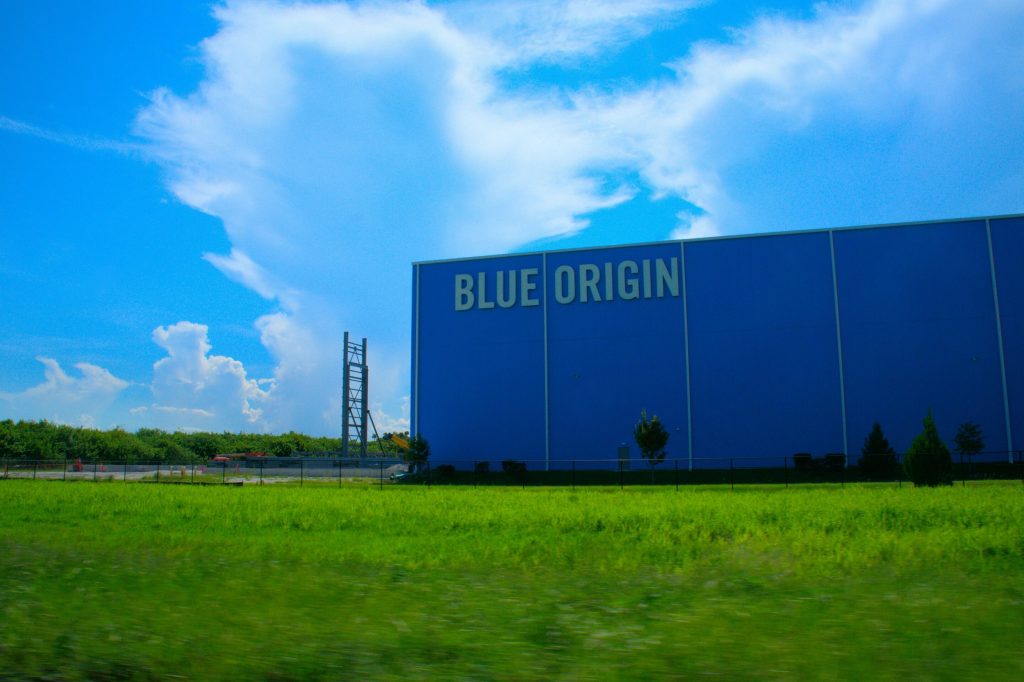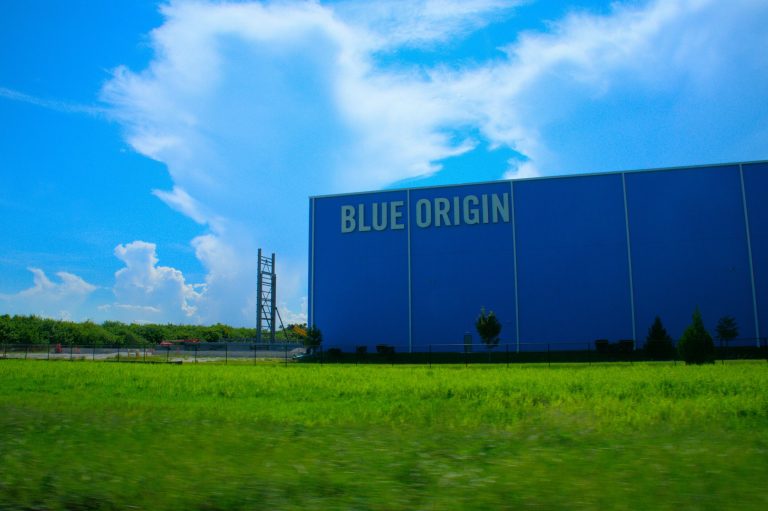
Blue Origin hauls massive New Glenn 1st stage to launch site with hot fire up next (Image Credit: Phys.org)

Blue Origin hauled the immense first stage booster for its upcoming debut launch of its New Glenn rocket to Cape Canaveral Space Force Station on October 30th.
Blue Origin CEO Dave Limp posted images to social media showing the 188-foot-long first stage with its seven BE-4 engines wrapped up in coverings with not-so-little Blue Origin logos making the trip from its factory in Merritt Island adjacent the Kennedy Space Center Visitor Complex over to its future launch site at Canaveral’s Space Launch Complex 36.
Jeff Bezos’ rocket company is still aiming for a November launch of the heavy-lift rocket, which, when combined with the second stage and fairing, would be more than 320 feet tall. The exact date has not been announced, although Port Canaveral officials alluded to a Nov. 30 target date in a recent port commission meeting.
The 23-mile trip for the booster was a “multiple-hour journey to our pad because we have to take the long way around,” Limp posted.
It was placed on two trailers with an in-house assembly to support the rocket featuring 22 axles and 176 tires towed by a repurposed U.S. Army tank transporter called an Oshkosh M1070 with 505 horsepower and 1,825 pound-feet of torque, Limp said.
“Seems fitting we’ve named it GERT—Giant Enormous Rocket Truck. The distance between GERT’s front bumper and the trailer’s rear is 310,” about the length of a football field,” he posted.
It began its trip before sunrise and made it by the afternoon. Limp said the next step is to put the first and second stages together on the launch pad for a fully integrated hot fire dress rehearsal. The second stage recently completed its own hot fire at the launch site.
If all goes well, the company would move forward with the launch.
Bezos has invested more than $1 billion alone to get SLC-36 up and running for the launches. Located on the southern end of the Space Force station, launches will be only 5 miles from the inlet at Port Canaveral, and should prove to be popular for crowds looking for a spectacle, such as from the beaches of Jetty Park.
In comparison, the popular SpaceX Falcon Heavy launches from Kennedy Space Center’s Launch Pad 39-A are 14 miles away from the inlet.
Blue Origin took over the lease for LC-36 in 2015. It had previously been used for government launches from 1962–2005, including lunar lander Surveyor 1 in 1967 and some of the Mariner probes.
While the rocket is untested, it won’t be the first time BE-4 engines have flown as Blue Origin supplies them for customer United Launch Alliance, which has used them on two launches of its Vulcan Centaur so far with another coming up.
Vulcan rockets use only two, while New Glenn’s seven engines will give it more than 3.8 million pounds of thrust on liftoff.
The company had to switch gears to focus on its own rocket after delivering enough BE-4 engines to ULA to support that company’s launch manifest through 2024. It recently shifted back, though, with ULA CEO Tory Bruno posting an image of another new BE-4 supplied for a future 2025 launch, as ULA has a backlog of 25 national security missions as well as commercial companies lined up to fly on its Vulcan rockets.
Vulcan rockets are expendable, though, while New Glenn looks to reuse its first-stage booster and the seven engines powering it.
Similar to SpaceX Falcon 9 boosters, New Glenn boosters aim for a recovery downrange in the Atlantic on Blue Origin’s landing vessel named Jacklyn, which is named after Bezos’ mother.
New Glenn boosters are designed for 25 flights.
For the first flight, Blue Origin is flying its own hardware as a payload, a satellite deployment technology it calls Blue Ring, but even though it doesn’t have a paying customer, it would, if successful, mark the first of two required certification flights needed by the rocket by the U.S. Space Force so it could potentially be awarded lucrative future national security missions alongside SpaceX and ULA.
Its second flight may not come until spring, and could be a pair of NASA satellites headed to Mars. NASA was originally slated to debut on the first New Glenn flight, but its launch window vs. the rocket’s readiness were not guaranteed, so it opted to wait until 2025 and save it from having to load up the satellites with costly fuel only to have to empty them again if it missed the launch window.
Blue Origin also has a large number of flights under contract with Bezos’ former company, Amazon, trying to send up thousands of its Project Kuiper internet satellites to build a constellation that would compete with SpaceX’s Starlink. Amazon has dozens of launches lined up among Blue Origin, ULA, Arianespace and even some on SpaceX over the next several years.
2024 Orlando Sentinel. Distributed by Tribune Content Agency, LLC.
Blue Origin hauls massive New Glenn 1st stage to launch site with hot fire up next (2024, November 2)
retrieved 4 November 2024
from https://phys.org/news/2024-11-blue-hauls-massive-glenn-1st.html
part may be reproduced without the written permission. The content is provided for information purposes only.





